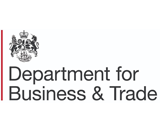It’s Safer Internet Day 2017
To mark Safer Internet Day 2017, young people across the UK are joining Government ministers, celebrities, industry figures, schools and police services to inspire people to ‘Be the Change’ and unite for a better internet today.
- Research by UK Safer Internet Centre highlights the positive and negative impact of online images and videos on young people
- The majority of children (84%) aged 8-17 have shared a photo online, with 1 in 6 doing so in the last hour
- 4 in 5 young people have been inspired by an online image or video to take positive action
- But more than 1 in 5 have been bullied with images or videos online and 70% have seen images and videos not suitable for their age
- Findings come as Safer Internet Day calls on communities to ‘Be the Change’ and unite for a better internet
A new study commissioned by official organisers of the day, the UK Safer Internet Centre, explores the power and influence of images and videos in digital youth culture, highlighting the positives and potential risks, as well as identifying the key skills young people need to navigate today’s online world.
Safer Internet Day is celebrated globally in February each year to promote the safe and positive use of digital technology for children and young people. Over 1,000 organisations are supporting the day, including former Olympic gymnast Beth Tweddle, the BBC, BT, Sky, O2, Vodafone, Lloyds Banking Group, Microsoft, Facebook, Twitter, Snapchat, Instagram, Google, NSPCC, Premier League football clubs and the UK Government, as well as police services, charities and schools across the UK, who are all coming together to deliver a range of inspiring activities. They’ll be joining hundreds of individuals supporting the #SID2017 social media campaign to inspire positive action, which is set to reach over 5 million with a mass tweet at 8.30am today.
Power of image
New research launched to mark Safer Internet Day reveals that images and video play a central role in young people’s digital lives and are powerful tools of communication, self-expression and creativity. The majority (84%) of 8-17 year-olds have shared a photo online, rising from 73% of 8-12 year-olds to 95% of 13-17 year-olds. In the last hour, 1 in 8 young people (12%) surveyed said they had shared a selfie, almost 1 in 3 had used YouTube (31%), 1 in 4 had used Snapchat (25%), and more than 1 in 5 had used Instagram (22%). Encouragingly, young people are using the power of image to make a difference: 4 in 5 young people (80%) said that in the last year they have felt inspired by an image or video online to do something positive. Furthermore, two thirds (67%) have posted an image or video on the internet for a variety of positive reasons, including to support friends (40%); to share something interesting with others (31%); and to encourage others to do something positive (17%).
However, while many of their experiences were positive, many young people are having negative experiences online:
Almost 2 in 5 (38%) have received negative comments on a photo they have posted; this can have a real impact on young people’s expression, as 2 in 5 (40%) said that they sometimes don’t post images because of worries about mean comments.
More than 1 in 5 (22%) of 8-17s said that someone has posted an image or video to bully them.
70% of 8-17s said they have seen images and videos not suitable for their age in the last year.
Almost half (45%) of 13-17-year-olds have seen nude or nearly nude photos of someone they know being shared around their school or local community.
Magnified pressures
Our image-focused digital culture can mean young people face pressures, including body image concerns.
According to the study, on average young people take 12 selfies before they are happy to post one online and 43% said they worry about how attractive they look when they share photos online. Furthermore, 45% have used a filter in the last year to make themselves look better. In particular, the study identified these trends mostly amongst 13-17 year old girls: almost two-thirds (61%) of them worry about how attractive they look when sharing photos online and nearly half (47%) of them have felt sad about their appearance after seeing a particular image or video online.
Risky behaviour
The study also highlighted the need for young people to better understand privacy controls when sharing images and videos. Over half (56%) of young people aged 8-17 years said they have shared images or videos on a public social media profile, with almost a third (31%) saying that most of the photos they share are on a public profile that can be seen by anyone. Whilst just over half (51%) said they always think about what personal information they could be sharing before they post a photo or video online, nearly a third (30%) of 8-17 year olds have shared a photo they wouldn’t want their parents or carers to see. Almost a quarter (23%) said they don’t know how to control who can see what they post on social media sites.
More worryingly, the majority of young people have shared an image or video with a stranger: 65% of 8-17-year-olds have shared images or videos directly with people they only know online, with more than a quarter (27%) saying they have done so in the last day. Despite this, nearly 2 in 5 (38%) say they worry about losing control of an image they have shared online.
The research also emphasised the importance of developing young people’s critical thinking skills when using the internet. Although the findings revealed nearly three quarters (70%) of young people surveyed agree that images and videos can be misleading and don’t always tell the full story, 48% said they are more likely to trust something has happened if they see an image or video of it.
Safer Internet Day 2017 in action
To explore the power and influence of images in young people’s digital lives the UK Safer Internet Centre has delivered a range of activities including:
Schools across the UK are using the Education Packs and SID TV films to empower young people to use images and videos safely and positively.
Young people across the UK have been taking part in a youth photo campaign to create engaging photos to explore the power and influence of images in their lives, with images being exhibited at youth events across the UK today and in an online gallery.
People across the UK have been joining the #giveasmile social media campaign to use the power of emojis and selfies to help make the internet a more positive place.
Will Gardner, a Director of the UK Safer Internet Centre and CEO of Childnet, said about the day: “It is fair to say that in 2017 the internet is powered by images and videos. This can magnify the risks and pressures that young people face, while also offering fun new opportunities for self-expression and creativity. Today’s findings remind us that with an ever-changing landscape, it is more important than ever to equip young people with the skills, knowledge, confidence and resilience to communicate using images and videos responsibly and positively.”
He added: “This Safer Internet Day young people around the UK are uniting to inspire a better internet. We need to harness this enthusiasm and empower them to ‘Be the Change’ and use the power of image to help create a better internet.”
Tony Neate, Chief Executive, Get Safe Online, said: “The latest figures from the UK Safer Internet Centre show the impact that internet images and social media sharing have on our children. Although the online world helps kids to connect and express themselves positively with people they may never meet in person, this could also open them up to some dangerous and extremely negative experiences.
He continued: “The best thing parents can do to keep their children safe online is to have an open dialogue with them. Try and make them feel comfortable enough to tell you if something online has made them feel uncomfortable or upset. What’s more, help them understand what is and isn’t appropriate behaviour online. Often kids don’t quite understand the implications of some of the things they do online – whether that’s writing a nasty comment on someone’s social media account or posting something that may come back to haunt them when they’re older. After all, one ill-judged post could have a negative effect on a child’s future job hunting or university aspirations. Finally, we should reinforce that not everyone is who they say they are online. We need to ensure our children fully understand the dangers of interacting with strangers online and make sure they know not to meet up with someone that they don’t know in person – certainly not without telling a parent first.”
Minister for Online Safety, Tracey Crouch, said: “The internet has provided young people with some amazing opportunities, but one of our top priorities is protecting them from risks they might face online. The UK is a world leader in internet safety, and measures in our Digital Economy Bill will be instrumental in better protecting children from harmful content. But there is still more to do, and Safer Internet Day is a fantastic reminder that we all have a part to play in making the online world a safer place for our children to discover, explore and enjoy."
Minister for Vulnerable Children and Families, Edward Timpson, said: “The internet is a powerful tool that gives children and young people many fantastic opportunities - but protecting them from the risks they might face online or on their phones remains absolutely vital. That's why I'm pleased to be able to support Safer Internet Day again this year, and look forward to hearing how schools and pupils take part.”
He continued: “At the Department for Education, we're continuing to work hard to make sure that young people, parents and teachers, are actively involved in promoting safe online practice, and we've been providing training and resources to support teachers in delivering the new curriculum, which includes e-safety.”
For more information about the activities taking place to celebrate Safer Internet Day, plus resources and advice for young people, parents, carers and teachers, visit the UK Safer Internet Centre website, www.saferinternet.org.uk
For information and advice on safeguarding children, click here.
Story from Get Safe Online.






